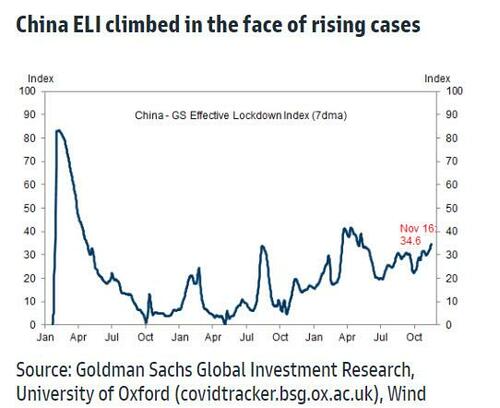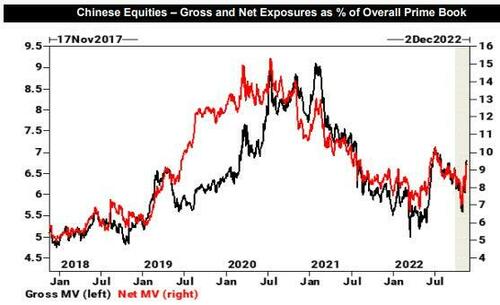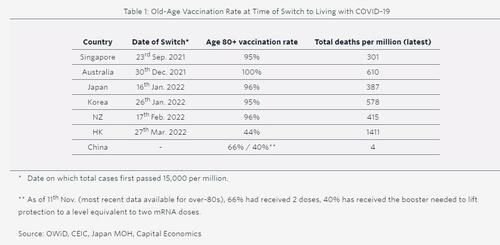What Reopening? China's Covid Restrictions Are Actually Tightening
By Ye Xie, Bloomberg Markets Live reporter and analyst
After the initial market euphoria over China’s reopening from Covid lockdowns, reality is settling in. Reopening isn’t as easy as turning on a water tap. It takes months of preparation to increase hospital resources, put jabs in the arms of senior citizens and shift the public narrative about the pandemic.
In fact, instead of loosening, China’s restrictions on social activities have strengthened in recent weeks. That should argue for investors to curb their enthusiasm.
Confusion. Chaos. More than a week after Beijing fine-tuned its Covid Zero strategy, local governments are struggling to balance the need to control the pandemic while also limit the economic damage. Shijiazhuang, a closely-watched city that had experimented with a version of “living with the virus,” has reversed course, suspending schools and asking residents to stay at home for five days. As infections multiplied, subway rides in some big cities such as Beijing, Guangzhou and Chongqing have tumbled.
The result is that Goldman Sachs’s Effective Lockdown Index has increased in recent weeks, despite Beijing’s new order to reduce the need for mass testing and citywide shutdowns.

The reality is that conditions are just not there yet to allow Beijing to live with the virus.
For example, officials have told hospitals designated to treat Covid patients to strengthen their capabilities, including increasing the share of ICU beds to 10%. To reach the target, China needs to add 30,000 ICU beds, a 50% increase from current levels, according to the estimate of Capital Economics’ Julian Evans-Pritchard. To put the number in perspective, only 6,370 ICU beds were added to hospitals nationwide in 2020.
Reported severe cases and deaths remain low. The three deaths acknowledged over the weekend were all people over 87 years old with pre-existing illnesses. The bad news is that this is the most vulnerable part of the population Beijing is struggling to get vaccinated.
Among those 80 years and older, only 66% have been fully vaccinated, and 40% have taken a booster, which provides comparable protection to two mRNA does. That’s considerably lower than the vaccination rate of at least 95% among other Asian countries, such as Singapore and South Korea, when they fully reopened the economy, according to Evans-Pritchard.
China’s current vaccine coverage among this group of 36 million people is closer to Hong Kong’s when it suffered a deadly and disruptive reopening earlier this year.
https://ift.tt/R4klIPe
from ZeroHedge News https://ift.tt/R4klIPe
via IFTTT






0 comments
Post a Comment